- NEW DVD Series – Stone Setting with Bezels
- Tube Set Charm by Kim St. Jean
- Prong Basket Pendant by Kim St. Jean
- NEW DVD Series – Stone Setting with Cold Connections
- New DVD Series – Stone Setting with Wire
- NEW DVD Series: Introduction to Stone Setting by Kim St. Jean
- Featured Tool: Bracelet Bending Plier
- NEW Dvd by Eva Sherman
- Fun, Fast Fold Forming DVD Series
- Double Band Ear Cuff from Alex Simkin
Gem Profile September 13: Derbyshire Blue John
by Layna Palmer, Wire-Sculpture.com

Derbyshire Blue John
While surfing the internet for more beautiful and unusual minerals and gems, I came across another rare stone found only in the Peak District of England near Castleton, Derbeyshire. This rare blue and yellow banded fluorite is known as Blue John.
The name comes presumably from French language for the colors of the stone; Bleu et Jaune (blue and yellow), although there are no records of the French mining the stone or it being exported to France. The most likely origin of the name comes from the miners themselves to differentiate the banded fluorite from the zinc ore called Black Jack that was mined in the same area.
What is Blue John?
Originally mined by the Romans over 2000 years ago for smelting and ornamental uses, Blue John has been admired for centuries. Pliny the Elder referred to the stone as Murrhine and gives an account of a Roman consul drinking from a goblet made from Blue John and gnawing at the rim of his cup.
Murrhine is described by Pliny the Elder as a stone “with a great variety of colors…shades of purple and white with a mixture of the two” that was used to carve drinking vessels. Two such cups were found in Roman graves near the border between Turkey and Syria and were carved from Blue John. They now reside in the British Museum.
How do we get Blue John?
Blue John today is mined from two caverns in the Peak District; Blue John and Treak Cliff caverns. They sit in a complex of caverns beneath the rolling hills that lie in Derbyshire, Staffordshire and Cheshire. The caverns are a local tourist attraction in addition to being an active mine. Blue John is found in ganges, or veins, around 3 inches thick along the sides of the limestone caverns in rakes, scrins and pipes.
Rakes are vertical with areas nearly 10 feet wide at points and can be followed for often more than a mile. Scrins are veins that branch off a rake and are smaller in width and shorter than a rake. A pipe is an area between rakes that is horizontal and irregular often occurring as nodular masses.
While fluorite occurs worldwide and in various colors from pink, purple and blue to clear and yellow, only the banded fluorite Blue John is found in the Peak mining district of Derbyshire.
Blue John is a soft stone at only 4 on the Mohs scale. It has perfect cleavage and is easy to carve and is rarely faceted. Lapidarists option to form the stone en cabochon to better show the beautiful color variation of the stone.
Take a trip to see Blue John:
If you’re planning a trip to the United Kingdom leave a day for a trip to the Blue John caverns in Derbeyshire. The caverns are open year-round except for Christmas and New Years Day. The caverns are well-lit and debris free for tours and dogs are always welcome.
There is some interesting history surrounding the mine with bones over 4.000 years old being found in the mine. Those are on display for all to view. There is also a story of the most valuable vein of Blue John that had been lost for over 70 years only to be rediscovered under an old piece of carpet in the mud.
You can also explore the beautiful stalactites in the Treak Cliff cavern and learn more about the history of the caverns, mining and Blue John.
Wrapping it up:
Next week we’ll take another dive into the rare and unusual with Eilat Stone. This beautiful green-blue stone gets its name from a city and is the national stone of a country…tune in to find out what it is!
Do you have any jewelry you’ve created that you’d like to share with us? Send us pictures at tips@wire-sculpture.com and they could be featured!
Resources:
- Click on each picture and it will take you to some additional sites not listed here. Enjoy!
- Blue John Cavern UK
- Derbyshire Blue John Info
- What causes the color in Derbyshire Blue John
- Photo of Blue John stone (no info used , just a great picture)
Gem Profile by Layna Palmer
Click to Receive Daily Tips by Email





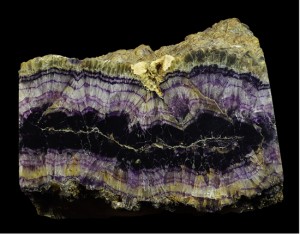
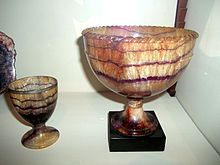
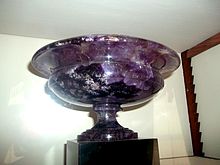
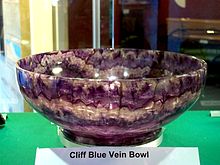
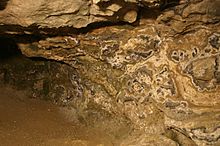
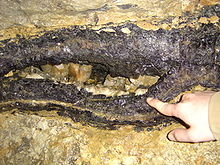

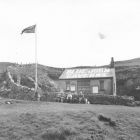

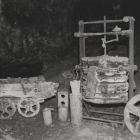
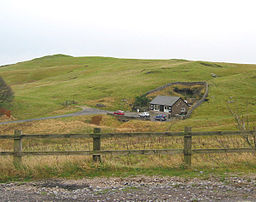
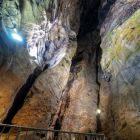
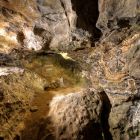

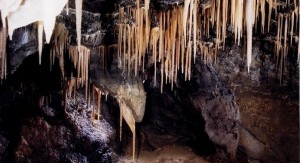















Jenny Smith
September 14, 2013 at 7:19 pm
My grandparents lived in Derbyshire and took me to see the mines when I was about 8 years old, I was fascinated. They bought me a small heart which I still have 61 years later. The stone as stated is soft and has some chips missing! It is a beautiful stone.